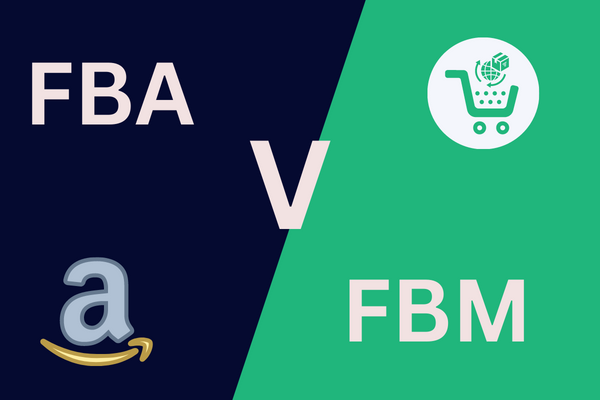As a brand, you’ve decided to sell on Amazon. Now you need to figure out exactly how to set-up and sell on Amazon.
One of the key decisions you need to make is fulfilment – how will you store, pick, pack and ship your products to customers?
The two key options you have are Amazon FBA – Fulfilled By Amazon, and FBM – Fulfilled By Merchant.
Amazon FBA is essentially outsourcing the fulfilment to Amazon itself – they will store your products, pick and pack them for delivery and ship them to customers. An incredibly useful option if you don’t already have a warehousing and fulfilment service.
Amazon FBM is when the brand manages the storage and fulfilment either themselves, or through a third party. Your brand may already have a fast and reliable fulfilment service that makes sense to continue to use.
We’ve listed the key features and differences of both Amazon FBA and FBM, to help with your decision making.
Amazon FBA:
- Storage: FBA sellers can store their products in Amazon’s advanced network of fulfilment centres, saving space and reduce storage costs
- Shipping: Amazon handles the shipping and delivery of FBA orders, which can save sellers time and reduce shipping costs
- Amazon Prime Eligibility: FBA sellers can offer Amazon Prime two-day shipping to their customers, which can increase sales and visibility on Amazon
- Customer Service: Amazon handles customer service inquiries and returns for FBA orders, freeing up the seller’s time and resources
- Inventory Management: FBA sellers can use Amazon’s inventory management tools to track their inventory levels and avoid products being out of stock
- Fees: Amazon FBA sellers pay fees for storage, fulfilment, and shipping, however these fees can be offset by increased sales and reduced operational costs
- Buy Box Advantage: Amazon FBA sellers have greater odds of winning the ‘Buy Box’ over FBM sellers given that variables like fast, reliable and cheap shipping are part of the metrics that Amazon favours in the Buy Box, which generates the most sales
- Global Selling: Amazon FBA allows sellers to expand their business globally by using Amazon’s international fulfilment network
- Set-up and ongoing support: Amazon provides instructions and support to help sellers set up their account and start shipping their products through FBA
- Multi-Channel Fulfilment: Amazon FBA allows sellers to fulfil orders from other sales channels, such as their own website or a third-party marketplace, using Amazon’s fulfilment network.
FBM:
- Control: FBM sellers retain control over the fulfilment process, including shipping, packing, and handling, giving them flexibility to manage their inventory
- Cost: FBM sellers can save on fees compared to FBA sellers, as they only pay for shipping and storage costs that they incur
- Customisation: FBM sellers have more control over the packaging and branding of their products, which can help them differentiate from competitors
- Shipping: FBM sellers can choose their own shipping carriers and negotiate rates, which may save them on shipping costs
- Location: FBM sellers can choose where to store their inventory, which can be advantageous for sellers with a local customer base
- No Minimums: FBM sellers are not required to meet any minimum requirements or restrictions on the products they can sell, giving them more flexibility
- Low Volume: FBM may be an effective option for sellers with low-volume sales or seasonal products, as they can avoid the higher costs associated with FBA
- Direct Customer Contact: FBM sellers have direct contact with their customers and can handle any customer service inquiries and returns themselves
- Efficient Fulfilment Process: FBM sellers can ship products immediately after receiving an order, without the added time of sending it to Amazon’s fulfilment centre
- Quicker Set-up: FBM is easier to set up than FBA, as sellers only need to create a seller account and start fulfilling their own orders.
Need advice on which Amazon fulfilment program is better for your brand and products? Let’s chat.

